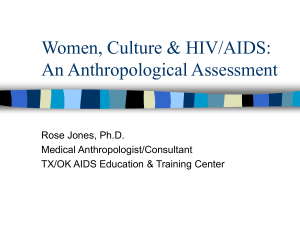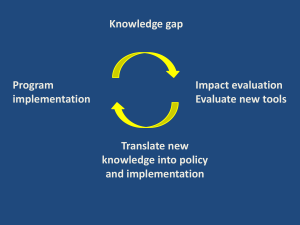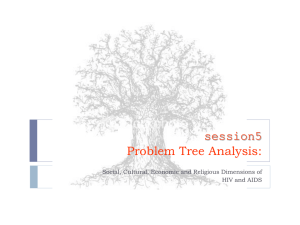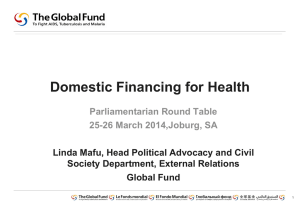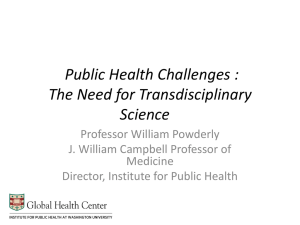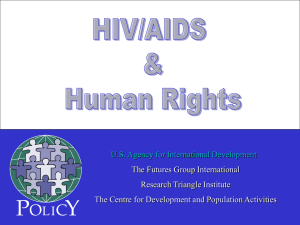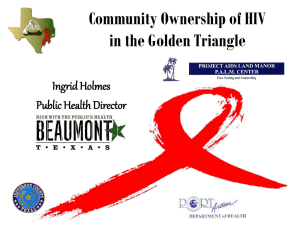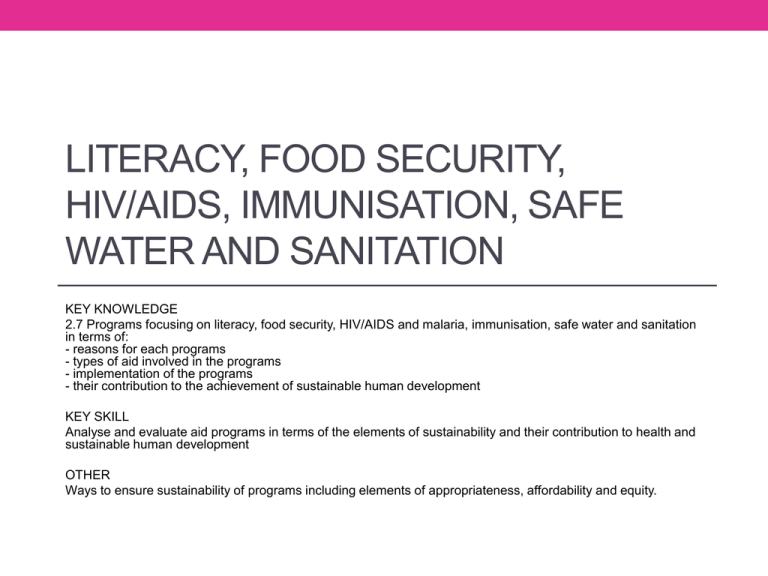
LITERACY, FOOD SECURITY,
HIV/AIDS, IMMUNISATION, SAFE
WATER AND SANITATION
KEY KNOWLEDGE
2.7 Programs focusing on literacy, food security, HIV/AIDS and malaria, immunisation, safe water and sanitation
in terms of:
- reasons for each programs
- types of aid involved in the programs
- implementation of the programs
- their contribution to the achievement of sustainable human development
KEY SKILL
Analyse and evaluate aid programs in terms of the elements of sustainability and their contribution to health and
sustainable human development
OTHER
Ways to ensure sustainability of programs including elements of appropriateness, affordability and equity.
Program
focus
Explanation
Literacy
The ability to identify, understand, interpret, create,
communicate and compute, using printed and written
materials associated with varying contexts.
Food security
The state in which all persons obtain nutritionally
adequate, culturally appropriate, safe food regularly
through local non-emergency sources.
HIV
Human Immunodeficiency virus is a virus causes a
gradual depletion and weakening of the immune
system, leading to immune deficiency.
AIDS
Acquired immunodeficiency syndrome is the most
advanced stages of HIV infection. The length of time
within which a person infected with HIV will develop
AIDS varies widely between individuals and can take
10-15 years
Malaria
Infection caused by a parasite that is passed on via the bite
from an infected mosquito. Once contracted, the parasite
multiplies in the liver and infects red blood cells.
Immunisation
Immunisation means both receiving a vaccine and becoming
immune to a disease, as a result of being vaccinated. Most
conditions that children die from in developing countries are
preventable through immunisation (eg. measles, TB and
whooping cough). Prevents illness and disability and saves
millions of lives each year.
Safe water
Safe water includes: Piped water, public taps, tube wells,
protected dug wells, protected springs, rainwater collection.
Sanitation
Sanitation refers to the collection, treatment and disposal of
human waste. Improved Sanitation refers to facilities that
reduce the chances of people coming into contact with human
excreta (toilets that flush waste into a piped sewer).
LITERACY
LITERACY
• The higher an individual’s level of education and literacy-
the better their health
• Literacy enables individuals to have better employment
opportunities
• Literate individuals are able to read and understand
health-related information that helps them engage in
health promoting behaviour
• Education about the causes of ill health, health promotion
and preventative strategies enable people to take control
over their own lives and health
IMPORTANCE OF LITERACY
• Literacy is a tool of personal empowerment and a means for social and human
development
• Literate parents are more likely to send their children to school
• Literate people are better able to access continuing educational opportunities
• When people are literate, they can read and communicate, make informed choices
and are generally more empowered to look after their own health
• Literacy enables skill development opportunities which increase likelihood of being
employed in higher paid jobs---- increase income and therefore standard of living,
decisions that affect their lives and lives of their children.
• Literacy in a community increases likelihood of employment---- taxes being paid
leads to an increase in GDP and money can be spent on developing infrastructure
for future generations.
• Literate people can also train to work as health workers in their own communities
• Poor literacy levels are linked to disadvantage in economic wellbeing and in health
status
• Literate societies are better able to meet pressing development challenges
• Literacy is essential for eradicating poverty, reducing child mortality, curbing
population growth, achieving gender equality and ensuring sustainable
development, peace and democracy
Literacy Program- WE BLOOM
NAME OF PROGRAM: WE BLOOM
WHO BY: CARE Australia (Non-government Organisation)
TYPE OF AID: Non-Government Aid
WHERE IMPLEMENTED: Cambodia
REASON FOR THE PROGRAM: Providing opportunities for young people who did
not finish school to gain the skills and confidence to enter the workforce. Girls in
Cambodia are unlikely to go to school and have reduced opportunities to gain
employment/higher paid employment compared to males. Income is often a
reason for girls not gaining an education.
HOW PROGRAM IS IMPLEMENTED:
- Provides classes for women that will enable them to gain skills and confidence to
enter the workforce.
- Classes include literacy, numeracy and life skill courses.
- Skills develop skill such as how to read, how to write, how to set goals, how to
manage finances etc.
- With these skills, women/girls are able to gain employment and/or start their own
business.
http://www.youtube.com/watch?v=Eo-Ncm2TAdw
* Watch ‘Study On’ (4,2,7,1)
IMPACT ON SUSTAINABLE HUMAN DEVELOPMENTSKELETON
HEALTH:
• We Bloom assists to provide females in Cambodia with access to educational classes on
literacy, numeracy and life skills.
• Through developing of skills, girls increase in confidence (MH) and increase their ability to
gain employment.
• Employment provides increased income and ability to provide food – reduce malnutrition
rates (PH) of females and her family.
HUMAN DEVELOPMENT
• With increased skills and confidence women are able to enhance their capabilities and make
decisions that affect their lives.
• Through employment and increased income women are able to improve their standard of
living.
• Through employment and ability to run own business women are able to participate in the life
of the community.
SUSTAINABILITY:
• Females/Girls who are educate are more likely to send their children to school to gain
education (Social S)
• Skill development and employment increases ability to earn an income. Improve income of
individual and also country (GNI) for current and future gen (Economic S)
Elements of Sustainability
APPROPRIATE
• There is a specific focus on women/girls and their education. Girls in
Cambodia unlikely to go to school due to poverty and therefore
unlikely to gain employment or high paid employment due to lack of
skills. Program addresses the barrier to education ‘income’ and
provides girls with opportunities to gain skills to enable employment
and improved income.
AFFORDABLE
• Free for Girls/Women- available to females who otherwise would go
without literacy skills due to a families inability to pay for it.
EQUITABLE
• Focuses on women- vulnerable group. Improving education of
women----- leads to improving the education levels of the country and
overall improved health.
FOOD SECURITY
FOOD SECURITY
• The state in which all persons obtain nutritionally adequate, culturally appropriate, safe food
regularly through local non-emergency sources.’
• Lack of food leads to malnutrition and reduced immunity to infectious diseases, resulting in shorter
life expectancy
• Children who do not have adequate nutrition tend to be smaller in height, weigh less and are less
able to perform physical tasks and can also have impaired intellectual capacities
• Means that at all times, people have physical, social and economic access to sufficient, safe and
nutritious foods to meet their dietary needs and food preferences for an active and healthy life
• Food security can also be viewed as the 4 A’s model, which identifies Availability, Accessibility,
Acceptability and Adequacy
• Available to all (sufficient quantity from a sustainable supply)
• Accessible to all
• Culturally acceptable
• Nutritionally adequate
• Reasons for food insecurity include
the following;
• Poverty – lack access to sufficient
•
•
•
•
•
•
resources to produce or buy food
Health – insufficient nutrients and energy,
poor health makes the body less able to
make sure of the food that is available, a
hungry mother will give birth to un
underweight baby, contaminated food
and water can cause illness, HIV/AIDS
pandemic has reduced food production
Water and the environment – food
production requires water
Gender Equity – women play a vital role
in providing food and nutrition for their
families through their roles as food
producers, processors, traders and
income earners
Disasters and conflicts – natural disasters
can destroy large quantities of food and
seeds, conflict can reduce or destroy
food in production or storage
Population and urbanization – expanding
cities spread out across productive land
Trade barriers and trade imbalances –
affect the exporting of food as well as the
importing of agricultural products that
could enhance food security
FOOD SECURITY PROGRAM- WORLD FOOD PROGRAM:
SCHOOL MEALS
NAME: School Meals in Haiti
WHO BY: WFP (a department of the UN)
TYPE OF AID: Multilateral Aid
WHERE IMPLEMENTED: Haiti
REASON FOR THE PROGRAM: To address the high levels of malnutrition among
children and lack of attendance at school. To provide an incentive for children to
come to school to improve their ability to learn but also their physical health and
development.
HOW PROGRAM IS IMPLEMENTED:
• Teachers and aid workers serve students with hot meals to encourage them to
continue attending school.
• Meals can include:
• In-school (breakfast, lunch or both), meals can be prepared in schools, in the community or
delivered from centralized kitchens.
• Take-home rations, where families are given food if their children attend school regularly.
• Food is produced locally, which benefits local development efforts and small
farmers.
• School meals are combined with deworming and micronutrient fortification.
IMPACT ON SUSTAINABLE HUMAN DEVELOPMENTSKELETON
HEALTH:
• Students provided with an in school meal to encourage them to come to school.
Meals are often combined with deworming and micronutrient fortification.
• Reduces malnutrition (PH)– improved immune system and overall health
• Improves ability to concentrate at school.
• Students have take home rations to reduce hunger and malnutrition of family (PH)
HUMAN DEVELOPMENT
• Improved ability concentrate- improved ability to enhance skills and capabilities
• Can participate in the life of the community and interact with other students
through school environment/activities
• Enhances ability to lead a productive life and gain employment and further
income.
SUSTAINABILITY:
• Increased income – increased GNI- escape poverty cycle- Economic S
• Education skills/knowledge- more likely to educate their children- Social S
Elements of Sustainability
APPROPRIATE
• Linking school feeding programs to local agriculture, known as “home-grown
school feeding” helps boost local economies through the creation of reliable
markets, therefore it is involving the local people.
• It is culturally acceptable as they are providing children which is locally grown and
appropriate to their culture.
• It is addressing the most urgent needs of the community; such as poverty and
malnutrition.
AFFORDABLE
• WFP provides cooked meals, snacks, and/or take-home rations to encourage
children, especially girls, to consistently attend classes free of charge.
EQUITABLE
• Targeting those that live in poverty, who are malnourish, lack educationvulnerable groups.
• WFP works to ensure that the most vulnerable children in the poorest countries
receive sufficient nutrition to allow them to concentrate in school and develop into
healthy adults.
HIV/AIDS
WHAT is HIV/AIDS
Impact on health:
• Human Immunodeficiency virus
• Virus causes a gradual
depletion and weakening of the
immune system, leading to
‘immune deficiency
HIV
• Can be transmitted through
unprotected sex, transfusion of
contaminated blood, sharing of
contaminated needles, syringes
or other sharp instruments and
from mother to infant during
pregnancy, child birth and
breastfeeding.
-
Weak immune
system
-
Increases
susceptibility to
infections such as
pneumonia, TB
-
Lead to the
development of AIDS
-
Symptoms: flu like
symptoms, fever,
night sweats, extreme
fatigue, rapid weight
loss, swollen glands,
skin marks, diarrhoea
WHAT is HIV/AIDS
Impact on health:
AIDS
-
Premature mortality
• Acquired immunodeficiency
syndrome
-
Children becoming
orphans
• The most advanced stages of HIV
infection
-
Social stigma/ isolation
• The length of time within which a
person infected with HIV will
develop AIDS varies widely
between individuals and can take
10-15 years
-
Loss of income due to
inability to work
-
Economic effects on the
country
-
Loss of healthy adults
HIV/AIDS
• The people most vulnerable to HIV/AIDS are;
• The poor
• Women and girls
• People with multiple sex partners
• Injecting drug users
• Children of infected mothers
• Programs need to focus on education e.g prevention. They also need to focus on treatment
for those with HIV/AIDS.
TREATMENT: ART
• Antiretroviral therapy (ART) can slow down disease progression to AIDS by decreasing the
infected person’s viral load
• Treatment with ART is not available to many living with HIV.
• The cost is prohibitive, and good nutrition and health care are also costly in communities with
high infection rates
• Even with advocacy to reduce the cost of these drugs, they still remain out of reach to many
people living with HIV/AIDS in poor countries
HIV/AIDS PROGRAM- LOVE PATROL
NAME: LOVE PATROL
WHO BY: Wan Smolbag (Non-Government organisation)
FUNDED BY: DFAT
TYPE OF AID: Non-Government Aid
WHERE IMPLEMENTED: Vanuatu
REASON FOR THE PROGRAM: To break down barriers and reduce the
prevalence of individuals living and dying from HIV/AIDS in the Pacific through
education.
HOW PROGRAM IS IMPLEMENTED:
• A television soap drama that is shown on TV in Vanuatu.
• The TV series has key messages about the prevention, harm reduction and
testing for HIV/AIDS within its storyline.
• It also aims at breaking down barriers around HIV (including the stigma)
• Working with the TV series is a resource guide for Love Patrol. This is printed and
distributed for use in schools around the Pacific. Questions in the guide include;
what HIV is, how it spreads, how to use a condom, and where to go for HIV
testing.
IMPACT ON SUSTAINABLE HUMAN DEVELOPMENTSKELETON
HEALTH:
• Love Patrol is a TV series that has key messages about the prevention, harm reduction
and testing for HIV/AIDS within its storyline. This helps to reduce the transmission of HIV,
decreasing incidence of the condition and it’s impact on health (poor immune system, flu like
symptoms, social isolation)
• It also addresses the social stigma experienced by those with HIV/AIDS – discrimination and
isolation (SH/MH)
HUMAN DEVELOPMENT:
• Rates of transmission have decreased, less individuals with HIV and therefore more people
living long and health lives.
• Enables individuals to remain healthier for longer and continue to lead a productive life
through education, employment, primary care giver etc.
• Reduce stigma associated with the condition allows individuals with HIV/AIDS to continue to
participate in the life of the community without feeling judgement and discrimination.
SUSTAINABILITY:
• Education about prevention, harm reduction and testing for HIV/AID can be passed down to
future generation – Social S
• Healthier individuals/lower rates of HIV/AIDs enables individuals to continue their
education/employment, gain income and improve the economy of their country – Economic
S
Elements of Sustainability
APPROPRIATE
• TV show uses actors and real life stories from people in
Vanuatu. Helps to educate individuals on HIV/AID and how to
prevent.
• Involves the local people as they are the actors in the TV show.
• Addresses the issue of lack of education on how to prevent HIV
through educating on transmission, testing etc.
AFFORDABLE
• Free to air TV. Widely accessible by individuals.
EQUITABLE
• Focuses on people who are vulnerable- eg living with HIV/AIDS
to reduce the stigma and discrimination that they experience.
MALARIA
Impact on H/HD/S:
- Symptoms include: fever,
headache and vomiting
• Infection caused by a parasite
that is passed on via the bite
from an infected mosquito.
Malaria
-For pregnant woman may cause
miscarriage, premature birth or
stillbirth.
• Once contracted, the parasite
multiplies in the liver and
infects red blood cells.
- Severe maternal anaemia
• If not treated quickly it can
disrupt the blood supply to the
vital organs, causing death.
- Premature death
• Malaria can be treated and
prevented through a range of
cost effective methods.
- Leading cause of U5MR in Africa
• Symptoms usually appear 1015 days after the bite.
- Low birth weight babies
-Reduces Life Expectancy
-Impacts families ability to earn
income
- Reduces economic growth of a
country.
- Children cant attend school due to
lack of income from malaria
MALARIA
• Those most affected by malaria are;
• the poor who are unable to afford treatment or have limited access to health
care.
• Poor people who live in remote, rural areas of Africa with poorly constructed
dwellings are most at risk
• Tourism may suffer as people are less willing to travel to endemic
regions
• Preventative measures:
• Limiting mosquito breeding areas of stagnant water
• Sleeping under insecticide treated bed nets
• Spraying of insecticide around the home
• If contracted:
• Treat malaria with anti-malarial drugs
• Early detection will shorten the duration of the infection and prevent further
complications
MALARIA- NOTHING BUT NETS
NAME: NOTHING BUT NETS
WHO BY: United Nation Foundation
TYPE OF AID: Multilateral Aid
WHERE IMPLEMENTED: Africa
REASON FOR THE PROGRAM: To raise awareness and funding to
decrease the child mortality rates of malaria in Africa.
HOW PROGRAM IS IMPLEMENTED:
• Nothing But Nets works with UN agencies and other implementing
partners to purchase the nets and distribute them to families.
• Agencies and implementing partners deliver these and educate
individuals on how to use nets/why to use nets etc.
• Cost of nets are $10 and contributes made from charity to pay for them.
• Nets are long-lasting insecticide- treated bed nets which eliminate
contact with mosquitoes to ultimately eliminate malaria.
IMPACT ON SUSTAINABLE HUMAN DEVELOPMENTSKELETON
HEALTH:
• Prevention of malaria through provision of insecticide treated bed nets.
• Prevents contact of mosquito to individual when sleeping at night.
• Enables individuals/communities to be healthier and free from the
disease
HUMAN DEVELOPMENT:
• Having healthier individuals means that less individuals will be accessing
health care for malaria. This allows the government to spend money in
other areas such as education to allow individuals to expand their
capabilities and enhance their skills and knowledge.
• It also allows countries to place money into other areas of health care
such as immunisation of children so future generations can live long and
healthy lives.
SUSTAINABILITY:
• Placing funds in other areas such as education/health care means that
current and future generations will experience greater access – Social S
Elements of Sustainability
APPROPRIATE
• Uses cost effective ways to prevent malaria in areas which
malaria rates are high and causing a high level of burden.
Involves the education of how to use the bed nets.
AFFORDABLE
• Bed nets cost $10 which is raised through charity and provided
to individuals/families for free.
EQUITABLE
• The campaign targets populations that are particularly
vulnerable to malaria, such as refugees, internally displaced
people (IDPs), and other often overlooked demographics.
IMMUNISATION
IMMUNISATION
•
Most conditions that children die from in developing countries are preventable through immunisation.
•
Prevents illness and disability and saves millions of lives each year
•
Vaccine preventable diseases;
•
•
•
•
•
•
•
•
•
•
Measles
Meningitis
Haemophilus
Tuberculosis
Tetanus
Pertussis (Whooping Cough)
Diptheria
Pneumonia (new)
Rotavirus Diarrhoea (new)
Cervical Cancer (new)
•
Vaccinations in 1st and 2nd years most important
•
Pregnant women need to be vaccinated against tetanus to protect themselves and the child, as tetanus can spread quickly,
resulting in a quick and painful death
•
People most at risk;
•
•
•
•
Children in rural and remote areas
Poorly serviced urban settings
Areas affected by war
Immunisation is one of the most cost-effective methods
IMMUNISATION- IMMUNISATION PROGRAM IN EAST TIMOR
NAME: IMMUNISATION PROGRAM IN EAST TIMOR
WHO BY: DFAT
TYPE OF AID: Bilateral Aid
WHERE IMPLEMENTED: East Timor
REASON FOR THE PROGRAM: Lack of accessibility in rural villages
has made it almost impossible for children to receive immunisation.
Program introduced to increase access and reduce the infant and
under 5 mortality rates
HOW PROGRAM IS IMPLEMENTED:
• Australia provides funds to East Timor Ministry of Health and also
NGO to set up mobile clinics.
• The mobile clinics visit the rural villages and provide immunisations to
prevent diseases particularly for pregnant women and children
• Clinics also offer growth monitoring of children, antenatal care, advice
on family planning and information on nutrition and hygiene.
IMPACT ON SUSTAINABLE HUMAN DEVELOPMENTSKELETON
HEALTH:
• Through having mobile health clinics individuals in rural villages are able to have
access to health care
• Mothers and children are vaccinated against preventable conditions such as
measles, whooping cough and influenza.
• This helps to reduce infant/U5MR.
HUMAN DEVELOPMENT:
• Children who are immunised are less likely to be ill and are able to attend school.
• School provides an opportunity for children to enhance their capabilities and skills
and therefore have more choices in life and in employment.
• Employment provides income and the ability to have a decent standard of living.
SUSTAINABILITY:
• With reduce morbidity and mortality, high levels of education, there is overall a
greater level of income among individuals. This improves the economy of the
country- Economic S.
Elements of Sustainability
APPROPRIATE
• Addresses the lack of access to health care and high levels of infant
mortality through having mobile health clinics to visit rural and remote
areas.
• Involves the East Timor Government and also Non Government
Organisations to ensure program is appropriate for the needs of the
community.
AFFORDABLE
• Mobile health clinics travel to the rural and remote areas making it
affordable for individuals to access as most people in rural villages
cannot afford transport out of their village.
EQUITABLE
• Focuses on women and children, rural and remote areas, and those
that live in poverty.
WATER AND SANITATION
WATER AND SANITATION
WATER:
• Safe water includes: Piped water, public taps, tube wells, protected dug wells,
protected springs, rainwater collection.
• Unsafe water is often a result of contamination from human faeces. It can also
result from industrial and agricultural waste products.
SANITATION
• Sanitation refers to the collection, treatment and disposal of human waste
• Improved Sanitation refers to facilities that reduce the chances of people coming
into contact with human excreta (toilets that flush waste into a piped sewer)
• Considered ‘improved’ if they are private, as opposed to facilities shared with
other households
• Access to sanitation, such as simple latrines, prevents drinking water from being
contaminated by human waste and reduced infection
• Frequent hand-washing with soap and the safe storage of drinking water are highimpact practices
• Women and girls are particularly disadvantaged because they often have to wait
until dark. This can lead to illness and danger from attack
IMPACT ON HEATH
WATER
SANITATION
- Water borne diseases that cause high
morbidity and mortality (diarrhoea, cholera
and typhoid)
- Diarrhoeal disease
- Cooking and drinking of unsafe water
leads to widespread illnesses (scabies,
malaria)
- Women and children suffer neck, knee
and shoulder injuries or long term spinal
damage from carting water long distances
(The weight of water that women in Africa
and Asia carry on their heads is commonly
20kg)
- Reduces the amount of time that can be
spent on education, food production or
generation of income
- Sanitation and hygiene are associated
with a number water borne diseases.
-Intestinal worms (transmitted through the
ingestion of faecal matter or by stepping in
it with bare feet). E.g. roundworm can
result in malnutrition was the worm
absorbed the nutrients from the body.
- Increases risk of acute respiratory
infection such as pneumonia.
- Girls wouldn’t be denied their right to
education (due to schools lacking private
and decent sanitation facilities etc)
SAFE WATER
NAME: Developing wells and pumps in Niger
WHO BY: World Vision
TYPE OF AID: Non-government aid
WHERE IMPLEMENTED: Niger
REASON FOR THE PROGRAM: In drought prone areas such as Niger, Africa, lack of
rainfall means that less that half of the population has access to clean, safe water.
People in the area are dependent upon underground water, which they access by
digging deep wells by hand.
HOW PROGRAM IS IMPLEMENTED:
• World Vision work with the local communities in Niger to develop wells that are fitted
with pumps to make the collection of water easier.
• Trucks with large drills are brought into the village to drill down to the water and then a
pump is attached.
• The pump reduces the amount of hard work required to draw the water to the surface.
• Women in the villages pay a small fee for the water for the maintenance of the pump.
IMPACT ON SUSTAINABLE HUMAN DEVELOPMENTSKELETON
HEALTH:
• Building of wells decreases diseases such as diarrhea and cholera.
• Reduces child malnutrition and reduces U5MR.
HUMAN DEVELOPMENT:
• Healthier populations are more likely to be educated and develop
skills and capabilities on how to sustain clean water.
• As women are not having to walk hours for water they are able to
participate in the life of the community and also have greater choices
in regards to their education, employment etc.
SUSTAINABILITY:
• Improved access to clean water and with education on how to
effectively remove water produces it is more likely to be sustained for
future generations – Environmental S
Elements of Sustainability
APPROPRIATE
• Addresses the lack of access to clean water experienced by the
people of Niger. Involved educating local people on the maintenance
of wells.
AFFORDABLE
• Funded and skills provided by NGO to build wells/educate local
people. This allows communities to have the resources needed for
clean water.
• Small fee involved to ensure maintenance of the well is upheld to
ensure it is able to be used by future generations.
EQUITABLE
• Wells were placed in areas considered ‘best location’ by the local
people to reduce the time spent by women and children for the
collection of water.
SANITATION
NAME: Building latrines in Malawi
WHO BY: Water Aid
TYPE OF AID: Non-government aid
WHERE IMPLEMENTED: Malawi
REASON FOR THE PROGRAM: There is a lack of access to sanitation and people in
the community have no choice but to defecate in the open.
HOW PROGRAM IS IMPLEMENTED:
• Water Aid provide financial assistance to build toilets/latrines. Simple composting
latrines help keep water sources clean and provide fertiliser for crops.
• Local community members are educated on the maintenance of the latrines and the
benefits of using the fertiliser to grow crops.
• The concrete latrine slabs are made by local community members, and if families
cannot afford to pay for them with money they can do so with the fertiliser produced by
the toilet or bananas that have been grown using the fertiliser.
http://www.wateraid.org/au/where-we-work/page/malawi#
IMPACT ON SUSTAINABLE HUMAN DEVELOPMENTSKELETON
HEALTH:
• Building of latrines decreases diseases such as diarrhea and
cholera.
• Reduces child malnutrition and reduces U5MR.
HUMAN DEVELOPMENT:
• Healthier populations are more likely to be educated and
develop skills and capabilities on how to improve hygiene. The
community can lead a productive and creative life by attending
work or schooling.
SUSTAINABILITY:
• Improved access to sanitation and with education on how to
effectively remove water produces it is more likely to be
sustained for future generations – Environmental S
Elements of Sustainability
APPROPRIATE
• Addresses the lack of access sanitation experienced by the people of
PNG. Involved educating local people on the maintenance of latrines.
AFFORDABLE
• Funded and skills provided by NGO to build latrines. This allows
communities to have the resources needed for adequate sanitation.
• Small fee involved to ensure maintenance of the latrine is upheld to
ensure it is able to be used by future generations.
EQUITABLE
• Latrines were placed in areas considered ‘best location’ by the local
people in villages and communities that were the most vulnerable.
OTHER PROGRAMS
Poverty
Maternal Health
A PROGRAM FOR POVERTY
NAME: COTTAGE INDUSTRY
WHO BY: Tabitha Foundation Australia
TYPE OF AID: Non-government Aid
WHERE IMPLEMENTED: Cambodia
REASON FOR THE PROGRAM: To provide a source of supplemental income through the development and
marketing of products that use the hand skills of these people and that will allow them to meet their home
life needs
HOW PROGRAM IS IMPLEMENTED:
• A project where community members join a group and undertake a six-week training course and discover a
specific hand skill. Skill varies: crocheting, knitting, weaving, sewing, wood-carving etc. Products are then
made and sold, with the money providing the workers with an income.
• At the end of the six weeks, the individuals (usually women) have made enough money to a sewing
machine, allowing them to work from home
• Tabitha buy the materials the women need and at the end of each week the women delivers the finished
goods she has made.
• If the goods are of poor quality, the supervisor teaches the woman new procedures etc. Once of good
quality the supervisor will make payments for the finished goods.
• The women decide how many pieces they would like to make and how much income they would like to
earn.
• Tabitha pays workers a fair price for all products, providing employment and income for local people.
• Tabitha imports the goods and organizes the marketing and supply to the Australian public.
A PROGRAM FOR MATERNAL HEALTH
NAME: Birthing Kits
WHO BY: Birthing Kit Foundation Australia
TYPE OF AID: Non-government Aid
WHERE IMPLEMENTED: Over 30 Countries (Ethiopia)
REASON FOR THE PROGRAM: Reduce maternal mortality and infections
by improving the conditions for women who give birth at home in
developing countries.
HOW PROGRAM IS IMPLEMENTED:
• Birthing Kits are made in Australia and distributed to women in remote
and rural regions of developing countries.
• Kits are delivered with the assistance of a health professional who gives
instructions on how to use the kits correctly and dispose of the waste
safely.
• Birthing kits are made with 6 items. A plastic sheet, soap, 2 gloves, sterile
scalpel blade, 3 cords and 5 gauze squares and address the 7 cleans
needed for a safe delivery.

